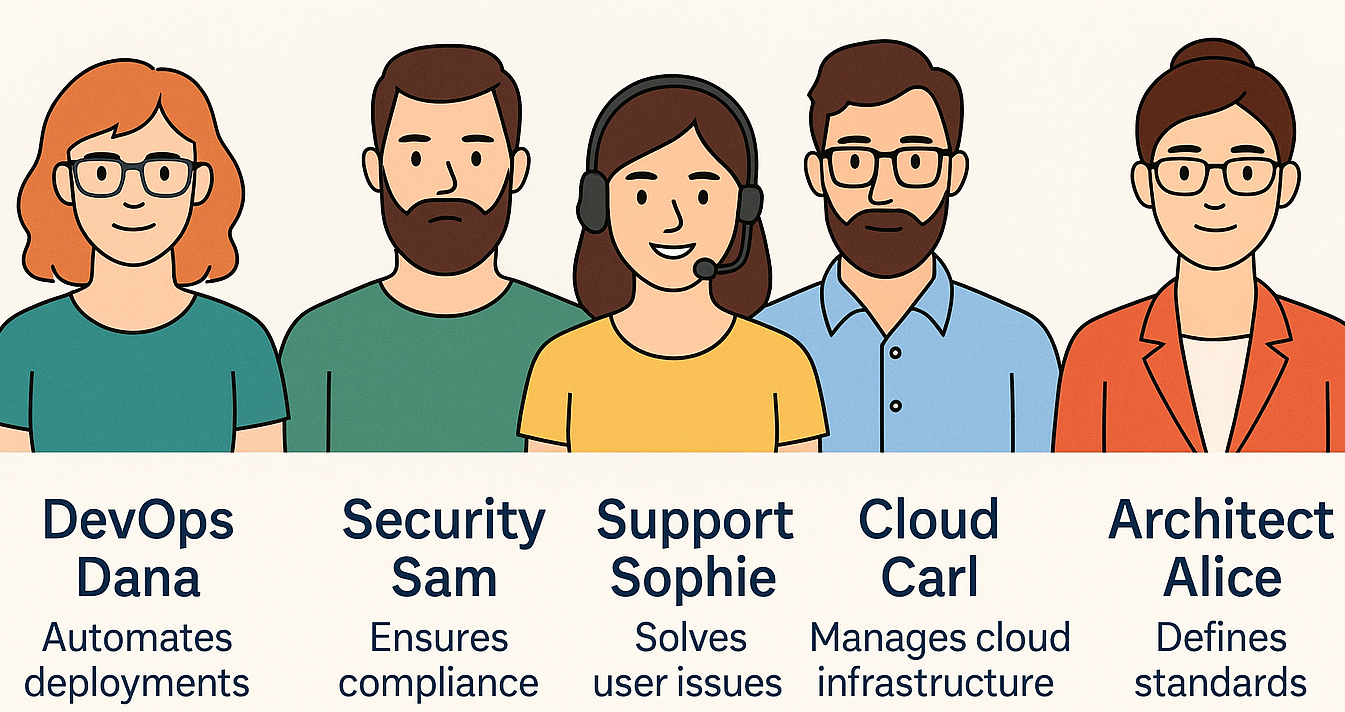The Key to Smarter Digital Transformation
In today’s fast-evolving digital landscape, IT is no longer a back-office function — it’s the backbone of innovation, security, and agility. Yet too often, organizations still treat “IT” as a single, homogeneous group. The truth is, behind every system, deployment, and support ticket stands a diverse mix of professionals — each with their own motivations, workflows, frustrations, and needs.
That’s where IT worker personas come in.
What Are IT Worker Personas?
An IT worker persona is a semi-fictional representation of a typical IT role or user, based on real data, interviews, and observation. Personas help organizations understand who their IT people are — how they think, what drives them, and what obstacles stand in their way.
They aren’t stereotypes; they’re insight tools. Each persona represents a group of professionals who share common goals, pain points, and behaviors. They make it easier for teams — whether in HR, management, or digital transformation — to design better processes, choose better tools, and build a stronger, more empowered IT culture.
Why Personas Matter in IT
Many digital transformation initiatives fail because they don’t account for the human side of technology. When IT departments are treated as monoliths, decisions about tooling, processes, or change management often miss the mark.
By introducing IT worker personas, companies can:
- Improve alignment and empathy: Understand the daily reality of different IT roles, from support engineers to architects.
- Make better decisions: Evaluate how new systems, workflows, or tools impact specific user groups.
- Increase efficiency and satisfaction: Tailor hardware, access, and environments to the actual needs of each persona.
- Enhance communication: Give teams a shared vocabulary — it’s easier to discuss “DevOps Dana” or “Security Sam” than “the IT department.”
- Optimize recruiting and retention: Build clearer candidate personas to attract and retain the right people.
Common IT Worker Personas
Every organization’s personas will look a bit different, but here are a few typical examples:
- DevOps Dana – Automates deployments, manages CI/CD, and ensures reliability. Values flexibility and hates manual work.
- Security Sam – Focused on compliance and threat prevention. Needs visibility, automation, and clarity in policy.
- Support Sophie – Solves user issues daily. Needs efficient tools, clear escalation paths, and great documentation.
- Cloud Carl – Manages cloud environments and cost optimization. Needs strong dashboards and integration.
- Architect Alice – Defines standards, frameworks, and system architectures. Needs collaboration and forward planning.
Each of these personas has unique priorities and frustrations — and recognizing them can transform how teams work together.
How to Create IT Worker Personas
Building personas is part research, part storytelling. Here’s how to start:
- Listen — Interview IT staff, observe workflows, and analyze support data.
- Identify patterns — Look for recurring themes in pain points, tools, and goals.
- Build the profiles — Give each persona a name, face, quote, and story that encapsulates their perspective.
- Validate and iterate — Present them to your teams, refine based on feedback, and keep them up-to-date as roles evolve.
Once created, embed these personas into every stage of your IT strategy — from onboarding and training to tool selection and change management.
The Human Side of IT
Technology succeeds when people do. By understanding and empowering the real individuals behind the code, configurations, and service desks, companies unlock their full digital potential.
At Kiss Consult Kft., we believe that great IT starts with great understanding. IT worker personas are more than a design tool — they’re a bridge between human experience and technological excellence.

Leave a Reply